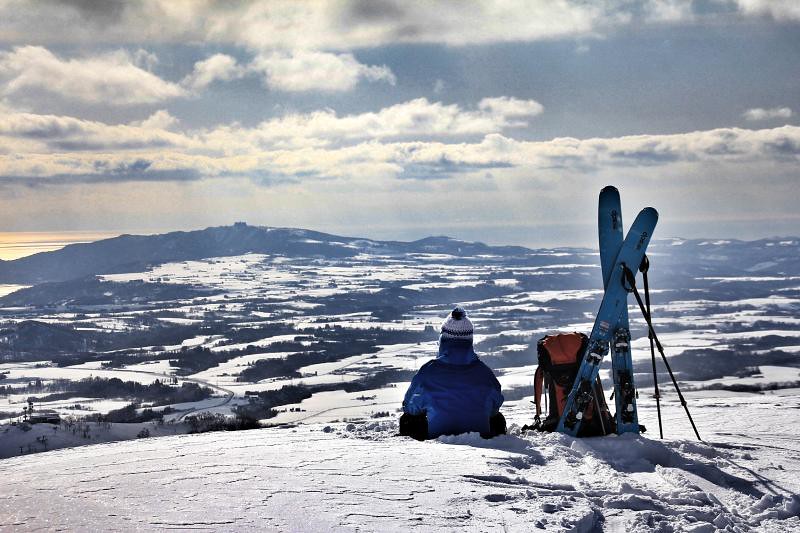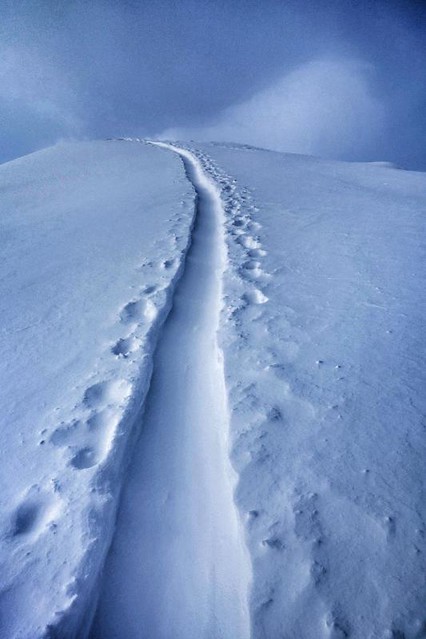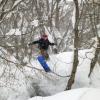-
Content Count
53 -
Joined
-
Last visited
Posts posted by Method
-
-
2m is a massive crown, hence why the avalanche was a size 3, that's massive. In most cases, not survivable even if someone was able to dig you out swiftly. A tragic situation and my heart goes out to the families of those involved.
Fantastic that the JAN gave us an english translation (thank you JAN
 ), it's my one wish that we could get a region-by-region daily summary (using the North American avalanche public danger scale i.e. low, moderate, considerable, high, extreme) with a short précis of current conditions (primary and secondary problems e.g. Loose Dry, Wind Slabs, Persistent Slabs etc ) in english such as you would get on avalanche.ca. Yes I'm aware of the niseko avalanche report, and this is a fantastic resource which I read every day I'm in that area, but to get a more "standardised" regional report (at least for say western hokkaido, eastern hokkaido, hakuba, myoko, gunma, hakkoda) would be a great improvement in safety for the ever increasing numbers of non-Japanese backcountry users.
), it's my one wish that we could get a region-by-region daily summary (using the North American avalanche public danger scale i.e. low, moderate, considerable, high, extreme) with a short précis of current conditions (primary and secondary problems e.g. Loose Dry, Wind Slabs, Persistent Slabs etc ) in english such as you would get on avalanche.ca. Yes I'm aware of the niseko avalanche report, and this is a fantastic resource which I read every day I'm in that area, but to get a more "standardised" regional report (at least for say western hokkaido, eastern hokkaido, hakuba, myoko, gunma, hakkoda) would be a great improvement in safety for the ever increasing numbers of non-Japanese backcountry users.Not really tubs.
Until there's a cold, clear night followed by a storm or there's little to no snow for a while and it's really cold (promotes formation of depth hoar in a thin snowpack)… You would have to be certifiable to head out in this area until there's more snow and the snowpack has had time to stabilise. The most solid predictor of avalanche activity is… well, and this is going to sound stupid, avalanche activity.
-
No idea. But that is a beautiful pic
 Did that lucky skier hike that hill?
Did that lucky skier hike that hill?Yes we hiked up.
Is it from Shiribetsudake? Looking down over the edge of Toya and the ocean beyond?You are all over that, like a fat kid on a cupcake! Nice one magseven
-
I don't know where that even is, so no! Sorry.
-
It might be a bit obscure, but here goes...

-
Looks like the crazy single chair at seki Onsen
-
Just based on that short video I would say the following...
I treat a snowpack like I'd treat a random nutcase that approaches me with a knife in the street I.e. until i know I can trust you, I'm going to treat you like you could kill me.
- an early season snowpack is a thin snowpack
- a thin snowpack is a dangerous snowpack, possibly some dangerous facets lurking (with fresh snow on top)
- there'd clearly been fresh snow with wind-loading.
- that aspect had obviously had some solar warming.
- looked like some nasty terrain traps.
It's certainly got a lot of red flags about it.
Of course I'm not there so this is only based on a 30 sec shaky video, it's always easy to "Monday morning quarterback" this stuff.
-
btw method, stay back from that cornice. or is that a crown fracture ?
No, it's just a small wind lip.
-
earning their turns

Hey you lot: close down all your lifts, people need to earn their turns.
Yeah works for me, shut 'em all down I say. The walk will set you free.


-
-
Predominantly locals, you won't be the only gaijin though, I'd try and go mid-week (like anywhere really). There's a nice side country gate skiers left of the top chair.
-
I should add, they said it's not necessarily a permanent thing and looking towards reopen next season.
Leave it closed (chise) I say, makes a nice gladed powder stash for those who don't mind earning their turns, a little flat though particularly for us snowboarders.
-
Clutching at straws, but maybe that joint with the buddha on the drive between furano and asahikawa?
-
Minami Furano?
-
The best backcountry, by definition, is not accessible by lifts!
-
The first thing you have to do is assess whether the area is safe before doing a rescue.
+1
-
A beacon that reverts to transmit when put in search mode is probably the most evil piece of equipment you could hope to have in a rescue attempt.
Not if you are searching and then get buried yourself!
 That's why they're designed like that. Of course, you can disable this feature if you like. I can tell you that I won't be!
That's why they're designed like that. Of course, you can disable this feature if you like. I can tell you that I won't be! -
Not "dissing" the summer hikers, but I was hoping for more "winter" oriented i.e. ski/splitboard touring info.
-
I'd be interested in hearing anyone's take on the pros and cons of different routes up (and down) Yotei San.
I've never made the peak, but I've gone as far as the alpine (bluebird when we started, puking when we got to tree-line
 ) starting from the the makkari side.
) starting from the the makkari side.The other approaches I've heard of are from Hangetsu-ko on the Hirafu side. I'm guessing you could also start from somewhere just north of Kimobetsu too. I guess it's all a matter of knowing which plowed roads give the closest approach. I've also heard of people doing the "double car" where you position one car at a different point from your start point.
Anyone like to share any of their Yotei experiences including routes up and down, times, hazards (yes I am aware of the avalanche danger)?
-
No problem with snowfall and also no grooming at a place across the valley from furano starting with "furano" and ending in "dake"
-
Panhead Pete,
Fair enough, it starts g etting $$$ when you buy beacons etc, you can always hire them from rhythm or somewhere similar .
Gozaimaas,
I guess we will have to agree to disagree! I did shiribetsudake 2 days last week on my split and I did it last year on snowshoes, I know which one I prefer!
-
Nonononono, don't do it!!!!
When you do buy a splitboard, your snowshoes will gather dust at the back of cupboard.
Skinning is so much more efficient than "slo-shoeing", I've been out heaps of times with snowshoers and they are always huffing and puffing at the back of the pack whilst the skiers/splitboarders are setting the pace out front. As a former snowshoer, I have seen the light and will NEVER go back.
I respectfully disagree with gozaimaas, splitboards have great float when skinning in pow and you don't have the weight on your back and the board whacking trees or getting yourself blown over on windy ridge lines.
The only time I could see snowshoes offering an advantage is when you are doing lots of short steep laps (e.g. Lapping A booter) even then you're probably better off sucking it up and laying in a bootpack first time up.
-
Ahhh.. I get it.
I didn't realize it was layered up, therefore similar to carrying a roll of duct tape without the hassle of the entire roll.
I was thinking it was just a piece of tape on the poles...and wondering why...

No issues with lost stickyness in the cold/wet?
Ah yeah somewhere like Japan, where the snow gets into every single crack and pocket, yes.
I replace the strips every now and then as they get "caked" on to your pole after a while and are useless.
-
Duct tape has a million uses in the backcountry... Basically temporary repair on any gear e.g. Torn seam on a jacket or glove
Rather than carry around a whole roll, I just roll a few 30-40 cm lengths around my ski pole and shovel handle.
-
On a backcountry day,
Splitboard, skins, poles obviously! If it's possibly going to be icy (e.g. Yotei) then ski crampons.
Avy gear i.e. brain, beacon, probe and shovel.
Emergency bivvy, basically a small silver foil type sheet bag (folds up to the size of an iPad mini)
Small first aid kit, incl thumb/finger splints.
Numerous length voile ski straps
Lightweight down jacket
Balaclava
Headlamp
Board / ski tool + leatherman/ Swiss army knife
Water / food
At the beginning of the season I put 3 short sections of gaffer/duct tape on each ski pole and shovel handle.



beacons
in Snow talk, trip reports, Japan avalanche & backcountry
Posted
"Staying Alive in Avalanche Terrain" by Bruce Tremper is what most people consider the "bible".
http://www.amazon.co...r/dp/1594850844
It's worth having a look on the web too as there's some fantastic online avalanche resources e.g. http://www.avalanche...g/online-course
http://www.avalanche.net.nz/education/Online-Avalanche-Course/Intro.asp
http://utahavalanchecenter.org/tutorials